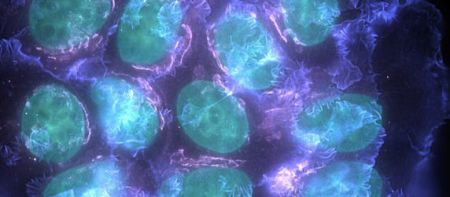Findings of a study published in Cancer Research, a journal of the American Association for Cancer Research, reveal that metabolic activity in cancer cells can now be measured via a new optical imaging technique, enabling accurate differentiation of breast cancer subtypes. Early detection of treatment responses is possible as soon as two days following administration of therapy.
The research shows that optical metabolic imaging (OMI) facilitates speedy, sensitive and precise measurement of drug action. Notably, OMI measurements can be done repeatedly in a live animal, reducing the cost of customary preclinical studies according to Alex Walsh, a graduate student in the Department of Biomedical Engineering at Vanderbilt University in Nashville, Tennessee.
To produce energy, human cells undergo extensive chemical reactions known as metabolic activity. In cancer cells, this activity is distorted and when treated with anticancer drugs, this metabolic movement changes. When exposed to certain forms of light two molecules involved in cellular metabolism, namely nicotinamide adenine dinucleotide (NADH) and flavin adenine dinucleotide (FAD), naturally emit fluorescence. The OMI process utilises this fact and generates specific signatures for cancer cells with a different metabolism and their reaction to drugs.
A custom-built, multiphoton microscope was used in the study by Walsh and colleagues, and it was coupled with a titanium-sapphire laser that causes NADH and FAD to emit fluorescence. Specific filters isolating the fluorescence emitted by these two molecules were installed to measure the ratio of the two as "redox ratio."
Both normal and cancerous breast cells were placed under the microscope for OMI to generate distinct signals for the two types of cells, further differentiating between estrogen receptor-positive, estrogen receptor-negative, HER2-positive, and HER2-negative breast cancer cells. The researchers then tested the impact of the anti-HER2 antibody trastuzumab on three breast cancer cell lines that respond differently to the antibody. A significant reduction of the redox ratios was discovered in drug-sensitive cells after trastuzumab treatment, however this remained unaffected in the resistant cells.
Next, human breast tumors were grown in mice and some of these treated with trastuzumab. Upon imaging tumors in live mice with OMI, a response difference between trastuzumab-sensitive and -resistant tumors was displayed as early as two days after the first dose of the antibody. In contrast to this result, the normal clinical metabolic imaging technique FDG-PET imaging, which lasted 12 days, did not measure any disparity in response between trastuzumab-sensitive and -resistant tumors at any moment in the experiment’s time.
Walsh stated "Cancer drugs have profound effects on cellular energy production, and this can be harnessed by OMI to identify responding cells from non-responding cells," and he hopes that it will be possible to develop a high-throughput screening method that will enable the prediction of the ideal drug treatment for a specific patient.
It is important to note the possibility of using OMI on freshly excised patient tissues, however, according to the researchers, with continued development this technique could be integrated in endoscopes for live imaging of human cancers.
15 October 2013



























